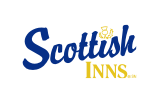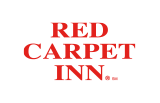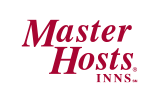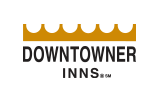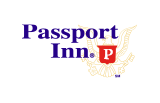by Ruben Reyes – Assurance & Marketing Program Director
The road to recovery may not be an easy road to travel but focusing on what you do now and how it is going to affect your hotel post COVID is something you need to seriously consider. We all know that people will begin to trickle out of isolation and start traveling soon, although many cities have re-opened. But while we are waiting for them to do so, the focus should be on existing business. Remember that 70% of your marketing strategies should be focused on pricing, so hoteliers need to be in line with their competitive set and with what is happening in the current market.
One of the biggest mistakes that many hoteliers are making is dropping their rates in order to sell rooms. But as they are doing this, they are leaving money on the table, while risking the hotel’s online and OTA presence. If you intend on recovering quickly, this is the wrong path to take, as you will have a difficult time recovering from the lower rates that you have posted. Routinely, hoteliers spend a great deal of time working on improving their hotel placement and productivity on OTA sites, as well as brand.com, because they know that the key to maintaining OTA integrity not only depends on good reviews, but on rates and availability, and this should not change.
According to a study conducted by Cornell, nearly 31% of all prospective guests begin their booking searches through an online travel agency and, as a result, hoteliers receive 10% of their overall contribution from OTAs and another 10% in direct bookings through brand.com due to the OTA’s promotion. This is why it is imperative to have a consistent and comprehensive listing on all possible online travel agencies because it will not only result in an increase in online bookings, but will also yield an increase in direct brand.com bookings due to the increase in awareness of your hotel and of the brand.
Make sure your listing contains content that is up-to-date, complete and convincing. Your most recent hotel information, photos, room amenities and policies should be accurately displayed on each of your listings; this type of listing should place an emphasis on the cleanliness of your rooms and common areas as it pertains to the current crisis, and should also be “change and cancellation sensitive.” This will not only help guests make informed and healthy choices about booking at your property but will ensure that you show up in the correct search results when guests use filters.
Interfacing your property’s management system with a central reservation system and signing up for the direct connect OTA option, if available, may be the most prudent thing to do, as you may not find the opportunity to shop your rates and availability regularly on brand.com and all your current OTA listings. This will streamline the process and ensure that you are in parity. By having open availability and all rates within parity, you will naturally achieve a better guest experience and make the booking process much easier for your prospective guest. In addition, your OTA market managers may be more willing to work with you to channel more reservations to your hotel and will be more open to placing your hotel on a list of high booking priorities, as they will see the potential of generating more revenue for your hotel, as well as the OTA.
- Maintaining rate parity will help increase your hotel’s ranking and will ensure that your hotel’s listing is in parity with brand.com and other OTA listings. In return, this will help increase your listings visibility and help boost organic searches.
- In addition to maximizing your hotel’s exposure and taking advantage of different booking opportunities on OTAs, you may consider loading vacation package rates to display for guests who are looking to book packages such as air + hotel or hotel + car rentals.
- Participating in opaque channels is another opportunity that you may want to take advantage of, as having a presence in an OTA’s variety of booking options will maximize your exposure and give you a fuller OTA structure.
Now is not the time to be idealistic about the cost of your rooms. Instead, be realistic about the current state of the economy and put your value proposition aside for a short time. Since you will not sell your rooms at their full price, you may have to settle for your break-even rate, which is obviously better than having a room sit empty. OTAs are no strangers to distressed room inventory. This is why it is important to work with your market manager and set up future promotions so that you may have a strong approach to tackle your future occupancy issues now, rather than later, by setting up a plan to help your online campaign beyond your current booking dates.
Hoteliers can also increase exposure by opting into 24-hour hotel flash sales, as this type of short booking window drives a strong call to action on behalf of the guest, and you can still target a longer travel window, depending on the sale and OTA. Targeting sales and channels short term and running special promotions on brand.com is a great way to reduce distressed inventory. Many hoteliers depended on short-term sales post 9/11 and it helped to alleviate the pain of empty rooms; use channels and mobile applications that are available through your OTA, Travel Media Group, and sites that specialize in this type of booking and travel window, such as Hotel Tonight, AGODA’s last minute deals or hoteliers.byhours.com.
Increasing and improving your cleaning protocols for your common areas and guest rooms will need to be meticulously looked at. While the Centers for Disease Control and Prevention recommended cleaning products and disinfectants are an important part of your cleaning arsenal, it is also important to wear personal protective equipment (PPE), such as gloves and breathing masks. Training is vital in assuring that your staff understands the value of not only their safety, but of the safety of their peers and of your guests. The World Health Organization offers free training, so please feel free to register.
High touch surfaces require extra attention; make sure that your staff focuses on disinfecting doorknobs, doors, elevator buttons, and public and hotel-only telephones. A re-training of your entire staff regarding the appropriate use of all cleaning products and disinfectants in the common areas and rooms is a good way to ensure room attendants and public space attendants are doing their job. The cleaning routine of all common areas needs to be conducted on an hourly basis dependent on your hotel’s occupancy and common area traffic.
Key cards are one of the first items that a guest encounters; assure them the front desk staff is cleaning and sterilizing all key cards since the keys are reused. The use of a disinfectant or alcohol solution with at least 70% alcohol will disinfect the keys properly and ensure that your staff is wearing gloves while disinfecting the key cards or keys.
Make hand sanitizer more readily available for guest use by setting up stations throughout all common areas, including the front desk and breakfast areas; these stations will need to be checked frequently.
Social distancing should continue to be practiced by your staff and guests, including a personal space barrier at the front desk or the use of a Plexiglas shield to form a safe space between your front desk staff and the guest. Make sure your staff is trained to place all key cards on the lobby counter and have the guest pick them up at check-in versus handing the key directly to the guest; this will avoid accidental hand contact. Place a limit of guests in all common areas such as the lobby, meeting spaces and breakfast areas.

